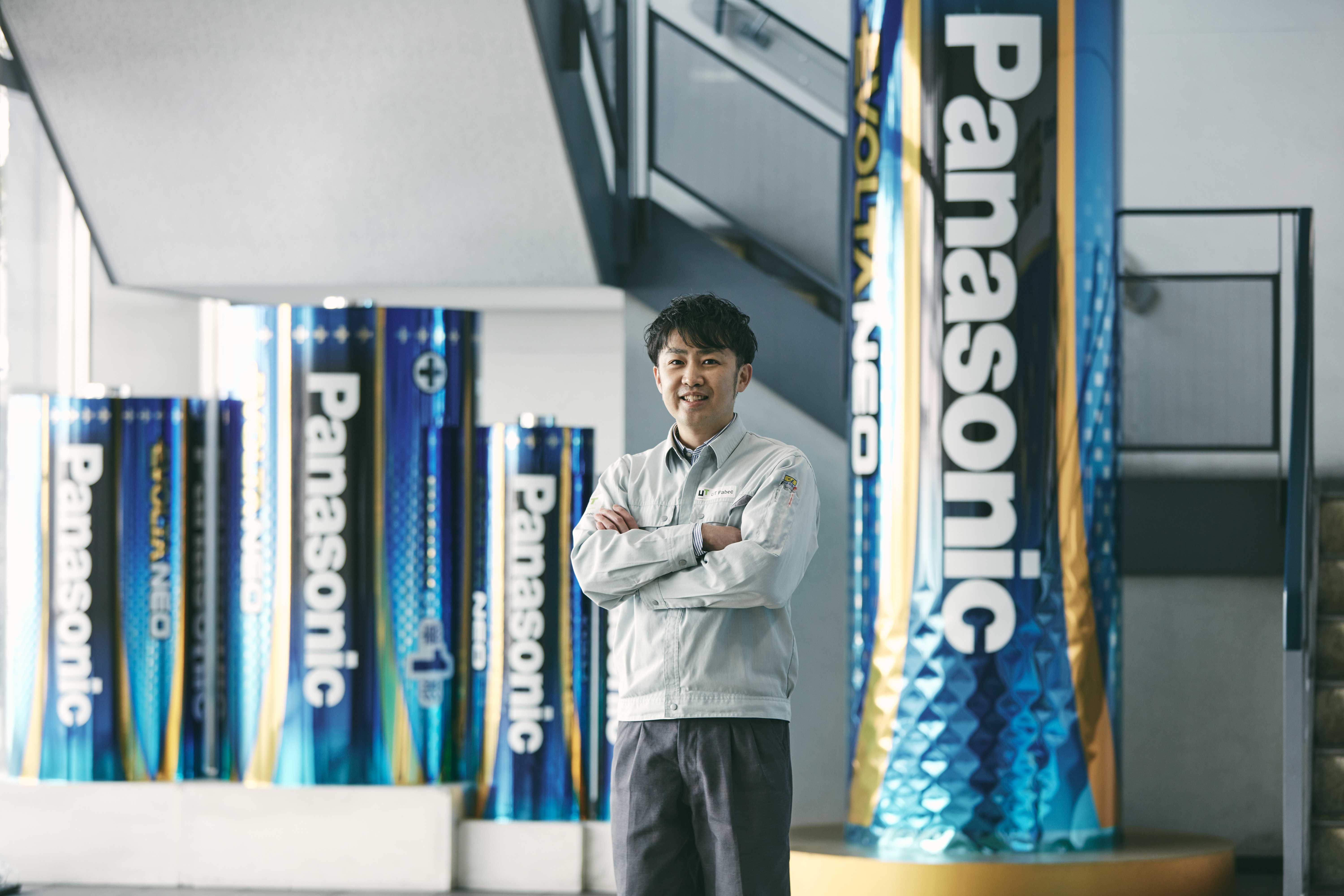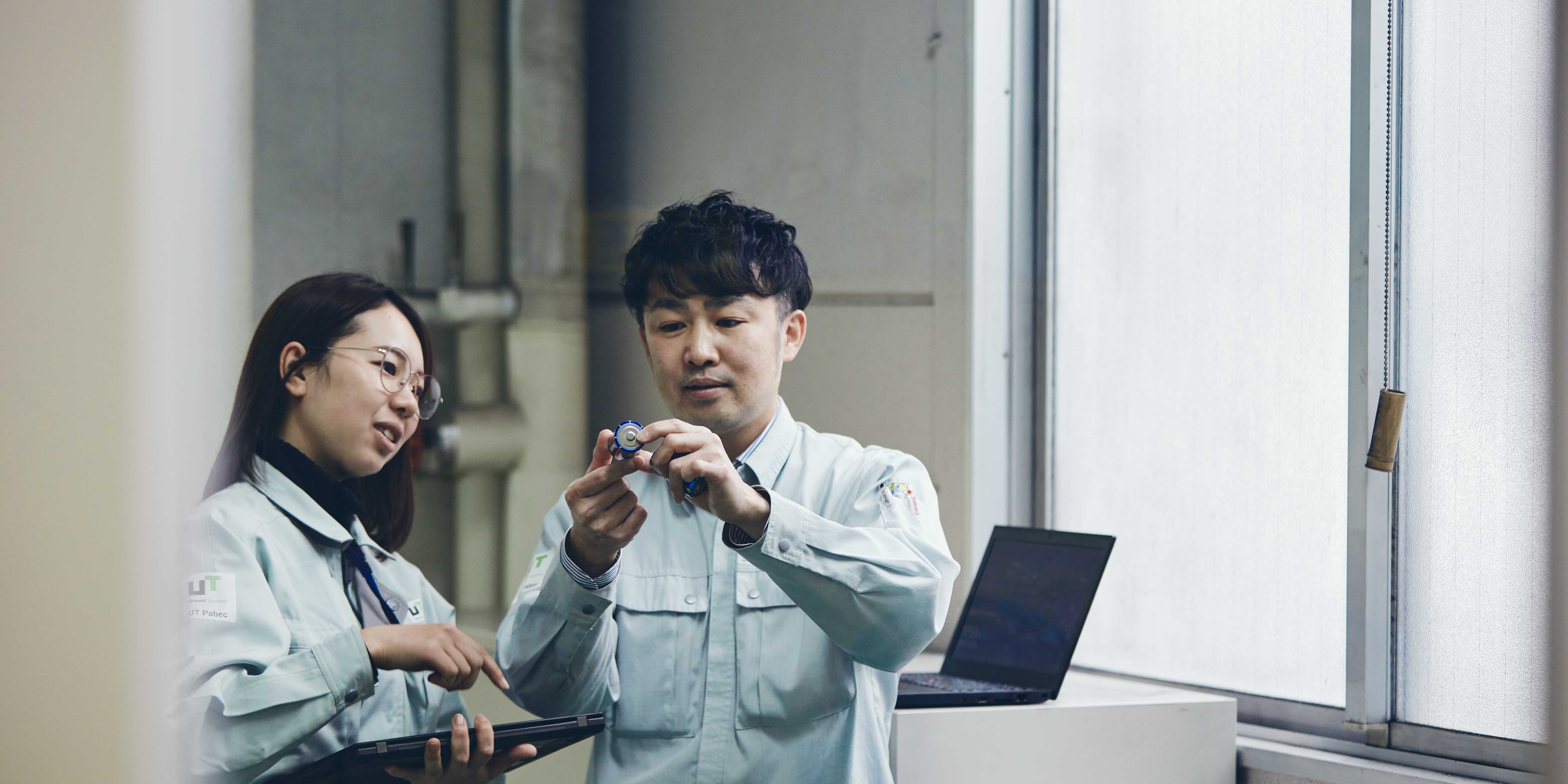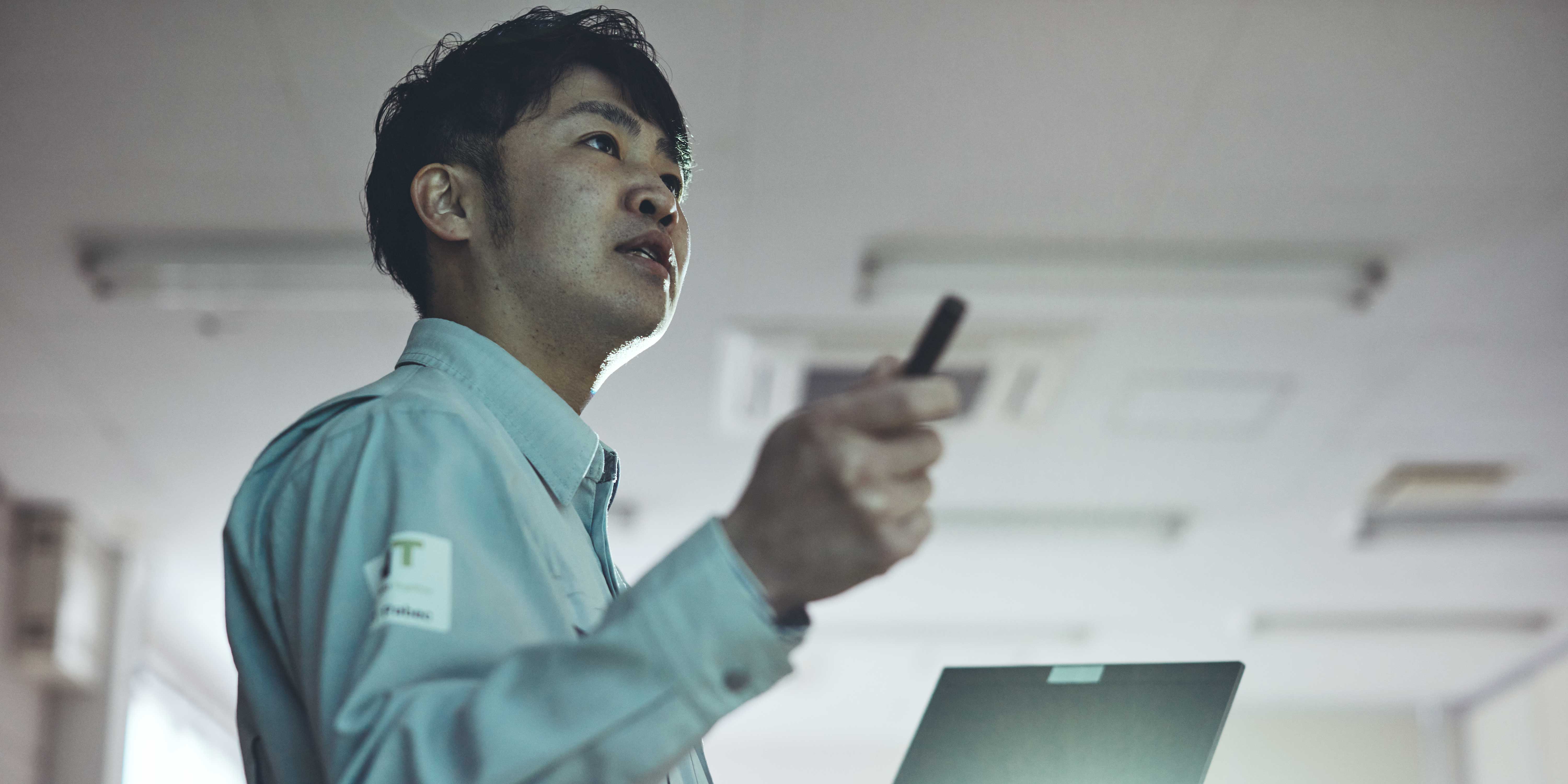
UT Aim
Tomoyoshi Imano
PROFILE
Tomoyoshi joined UT Pabec(now UT Aim) in 2004 at the age of 23. After working in various manufacturing processes at a dry cell battery plant in Moriguchi City, Osaka Prefecture, he became the manager in charge of UT's outsourced team in the factory from 2019. Then in 2021, he returned to the manufacturing worksite and became a manager for three processes. He loves to play with his 10- and 6-year-old sons on off-days.
Looking for a workplace where I can diligently handle products.

I was interested in fashion and when I graduated from high school I got a job at a bag manufacturer. After starting with inventory management, I was eventually assigned to repair jobs. I felt fulfilled to repair and revive bags which were used with much care by customers. In the fourth year, however, I was ordered to move to the sales department, out of the blue. I couldn’t imagine myself struggling to meet a quota, giving up a holiday, and be overwhelmed by negotiation with customers. I therefore looked for a manufacturing job and got to work at UT, where I am now working at a battery plant.
First, I was in charge of the process of wrapping and applying the exterior label of AA batteries and performing inspection. After that, I did wrapping the products as sets. Then I became a leader in the assembly process of attaching a lid called a seal plate to a battery containing electrolyte.
You may think that a battery factory is quite automated but in fact, some production lines still use old equipment, and the factory needs a lot of work done by people. Although there are manuals for the manufacturing equipment, there are no procedure manuals for operating the equipment, and the experienced workers have to teach their juniors. Your skill levels are clearly reflected in the results by numbers such as utilization and failure rates. There I felt fun in the operation.
When I felt more fulfilled with my work than in the past, I again received the similar assignment order as I did at the bag-maker. My new assignment was to be a manager in the management department, away from the manufacturing site. There I began to look at UT’s outsourced work at the battery plant in general, including the financial balance and personnel aspects.
A new perspective on manufacturing I learned in the management department.

The contract with our client manufacturer is based on the unit price of a single battery being manufactured. Even a small mistake in the quantity can result in loss-making. Also, if you make a mistake in calculating the number of workers deployed, a significant problem may arise. I must also look ahead to the departures and assignment plans of workers in order to develop a workforce plan. In addition, procurement of supplies and calculation of various expenses were also a part of my job. I struggled hard to get used to the unfamiliar work with numbers.
I was supported by the factory manager, and the plant made products including others than batteries. He was a kind of person who always nicely greeted each operator; he cared for his subordinates. He sometimes invited me to eat and gave me advice on work. I also had a lot of opportunities to join meetings with him, and I was impressed by both his way of thinking and his ability to make a presentation. What impressed me most was his resolute attitude toward the senior executives from the head office.
“It’s wrong to postpone that decision. All factory members are having difficulties.”
In March 2021, two years after I moved to the management department, I received great news. I was assigned back to the manufacturing floor. Currently, I am a manufacturing manager for the two processes of assembly and supply of cathode materials, and have about 40 UT members under me. How shall I make use of what I learned in the management department of the so-called “money and human resources” in manufacturing? I’ll probably have a lot more to learn from the plant manager, so that I can be closer to my model of a clear leader that I want to become.

